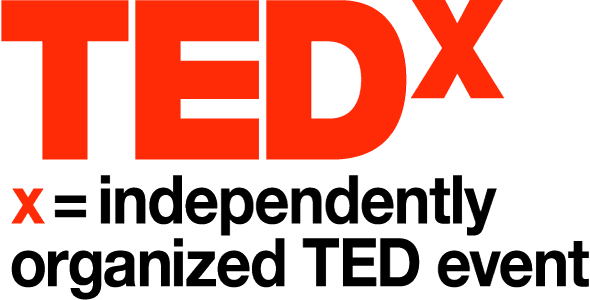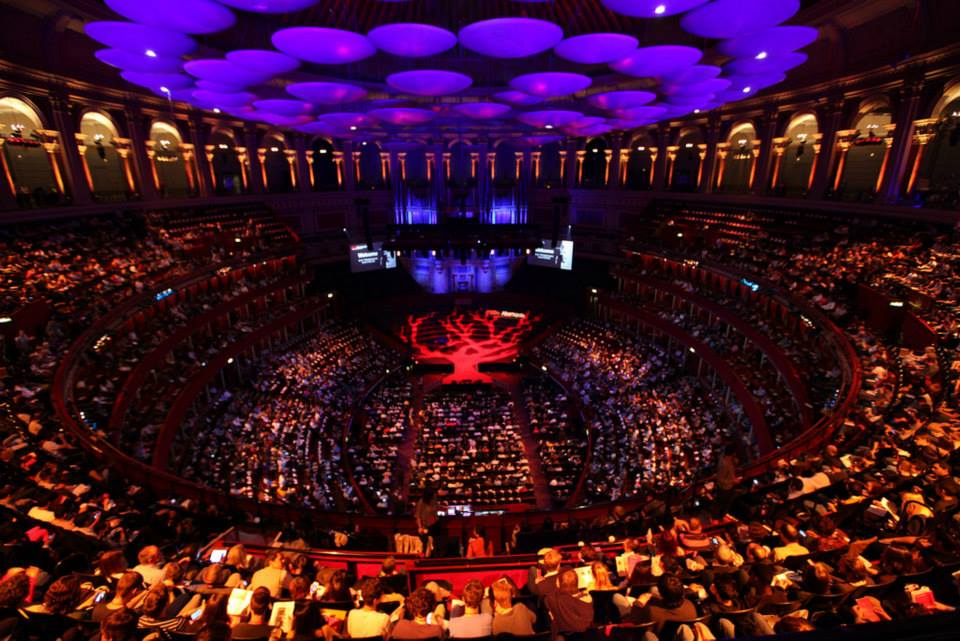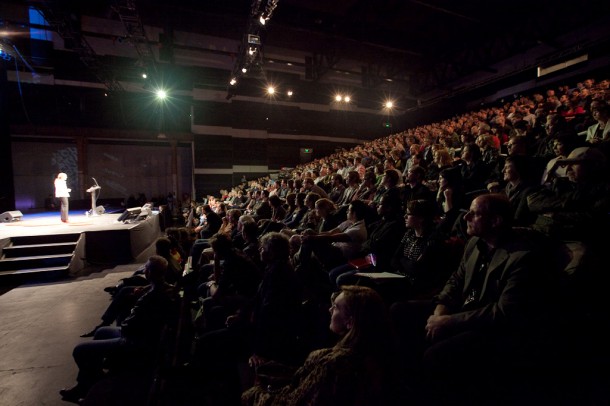 Your brand’s logo on a flag at the top of Mt. Everest.
Your brand’s logo on a flag at the top of Mt. Everest.
People sharing ideas through your platform in Arabic, Farsi and Portuguese.
A thriving community of engaged individuals, contributing ideas that improve your brand
Nine events a day that spread the spirit of your company in 153 countries around the world.
This is the TEDx program, founded by TED in 2009 as an answer to the question — “Can you bring a TED conference to my city? and just one of many examples of an open source brand community.
Others cases in the conference, technology and co-working spaces include The Hub, Mozilla, Startup Weekend and DuoLingo, who recently launched an Incubator initiative, allowing people to take the framework of their software to create language translation combos for their app that don’t yet exist.
I’ve been lucky enough to work on the TEDx team for over three years, to witness firsthand the explosive growth of the community, and to see the benefits that the global community of diverse TEDx organizers and events has brought to the TED brand.
So, how did TEDx do it?
Launching an open source brand community can grow your brand exponentially but managing these national and sometimes global communities of disparate individuals can come with its own set of challenges.
First, why open up your brand?
Two big reasons:
Expansion + Community Growth
To build a global or national community of people that are passionate about your brand and who are executing it in a local market so that you don’t have to.
When TEDx was launched in 2009, the TED conference had landed in California, Oxford and India. Now, people in 153 countries have experienced a TED-like event, and when TED did a talent search in 2012 to find speakers for the 2013 conference, the locations were seeded by local TEDx organziers.
Content Creation
To create content at a rate that you just can’t do from HQ.
17% of the talks on TED.com are from TEDx events — important when TED releases a new talk every weekday — and stories from TEDx communities around the world enhance the greater TED narrative on the blog, Facebook and Twitter.
How Do You Structure Your Community for Success?
1. Define the Spirit
This is the core of what you do. Establish a strong manifesto that reflects what the brand is about, and what you are trying to do with this initiative. With a solid spirit in place, you will create a community with a basis in passion and trust, rather than authoritarianism. This will later make it easier to exercise your ground rules, as you have established that everyone is here to accomplish the same goal. Spirit and passion are what truly scale a brand.
This is really the core of how all community management operates within TEDx — we refer to our community as a global tribe, and when conflicts arise, we go back to the reason why we are all here: to spread great ideas around the world. Whenever possible, we refer to the ethos, and ask community members to work out issues between themselves.
It also helps to enforce our rules — community members or people passionate about the brand in different cities reach out to us if they see something off, or someone breaking the rules.
2. Establish Rules
Ground rules are essential: They should be basic to begin with, and will grow as you expand and explore the boundaries of what you want, and what you don’t want. They should be written with an emphasis on the “spirit of your brand and of what you are trying to do.
The TEDx program has a lot of rules, and many have found them limiting, but rules are essential to ensure that everyone is operating from the same basic structure. The rules became more detailed as time went on, when things got to a point where we said, “Enough people have asked us about that, there should be a rule around it.
3. Create a Feedback Loop
Establish a clear feedback loop where community members can talk about what is working, and what is not working with someone from HQ, along with other community members. This is especially important as your initiative grows to become national and then international.
Groups may eventually break off into regional and language-based groups, but there should be one big group that is the source of all information, and moderated by someone at HQ.
Everyone on the TEDx team has an open invitation to their inbox for people to give feedback or ask questions, and the TEDx community has two main internal groups where individuals can ask questions (and where the team can gauge where general understanding on a topic is) and give critiques.
4. Cultivate Brand Evangelists + Ambassadors
The responsibilities and of localizing a brand cannot rest solely with a small team at HQ — you need to unearth and grow local brand evangelists who love the idea of what you are doing, and will put their own unique twist based on your ground rules. They will also act as local ambassadors of the brand, and enforces of the rules and spirit.
Most of the time, these people will come to the surface naturally — they are the ones who are reaching out to you, critiquing you, asking questions, and making big successes, and often big risks, with your brand.
Shortly after the program launched, TEDx launched an ambassador program — TEDx Ambassadors are appointed in countries where the team either does not speak the language, or where we need additional support. Ambassadors help us to understand local culture, the nuanced dynamics within a community and give us a much-needed perspective when conflict does arise. There are also the de-facto ambassadors — our go-to people that we know have put on a lot of events, or have expertise in particular topics, or have been in the community for a long time. We’ll often ask them questions about new initiatives we are thinking about, ask them to assist us in spreading the word about a new idea, or ask them to be beta testers for a new technology we are developing.
5. Be Flexible
The most important thing about building an open community within an existing brand is to be flexible. Community members will fail, and cross boundaries, but it is essential to create a space where these mistakes can occur, be learned from and improved on.
The TEDx rules are essential for the overall health of the brand, especially as it becomes even more global, but some of the greatest innovations to come out of the TEDx community have been ideas that we dubbed as, not really within what we do, but “experiments. There have been failures too, and allowing room for these experiments while also maintaining the spirit of the brand is a balancing act that has to be constantly maintained.



0 Comments